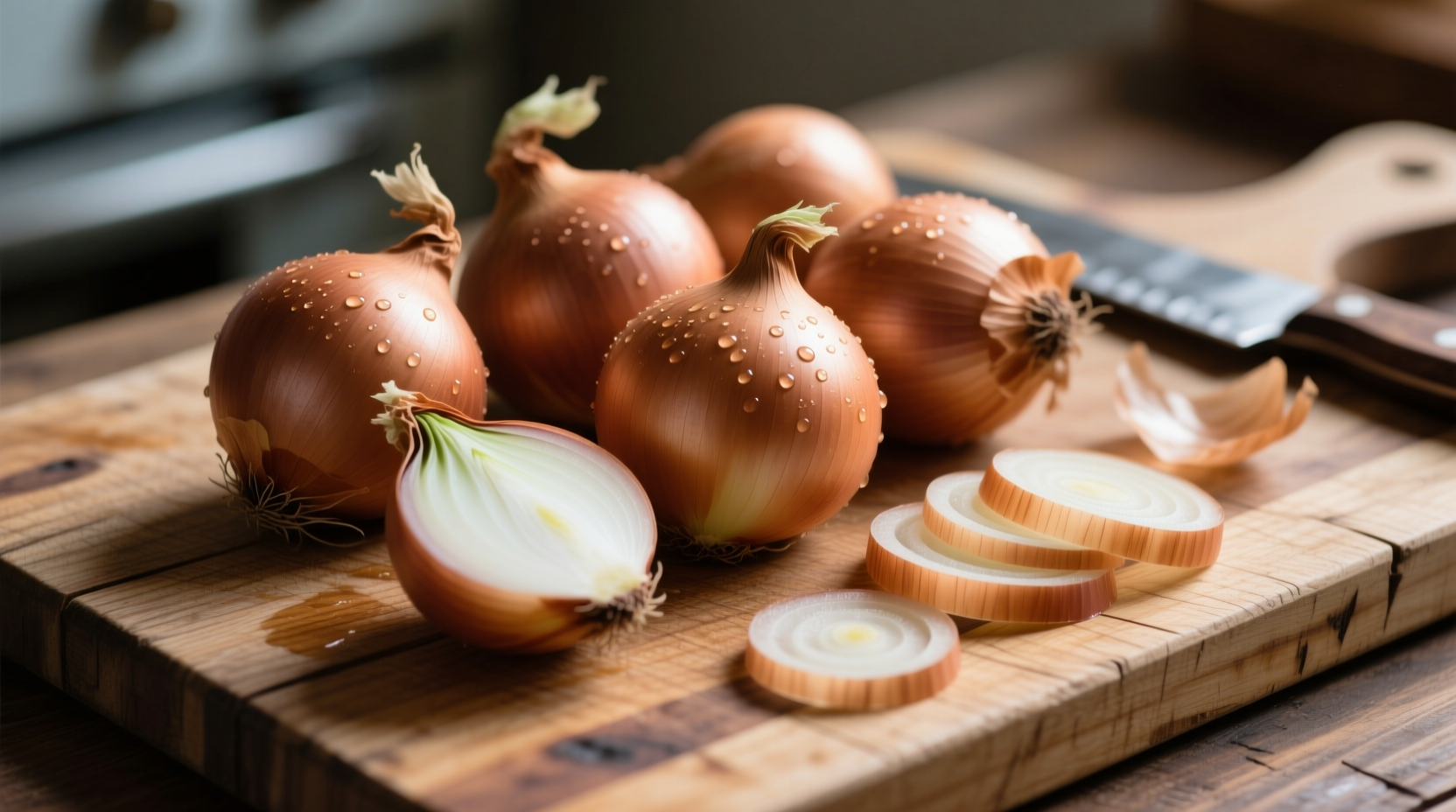What Exactly Is a Brown Onion?
Brown onions (Allium cepa) represent the most widely used onion variety in global cuisine, characterized by their coppery-brown skin and white to pale yellow flesh. Unlike red onions with their vibrant color or sweet Vidalias with higher sugar content, brown onions deliver the perfect balance of pungency and sweetness that forms the flavor foundation for countless dishes.
Professional chefs consistently reach for brown onions when building flavor bases because their sulfur compounds transform beautifully during cooking. When sliced and cooked slowly, their natural sugars caramelize into rich, complex flavors that elevate sauces, stews, and roasted vegetables. The USDA FoodData Central confirms brown onions contain higher quercetin levels than other common varieties, contributing to both their distinctive flavor and health benefits.

Brown Onion Varieties Compared
| Onion Type | Flavor Profile | Best Cooking Applications | Storage Duration |
|---|---|---|---|
| Brown/Yellow | Sharp when raw, sweet when cooked | Caramelizing, soups, stews, roasts | 2-3 months |
| Red | Mild, slightly sweet | Salads, salsas, pickling | 3-4 weeks |
| White | Sharp, clean flavor | Mexican cuisine, grilling | 3-4 weeks |
| Shallot | Delicate, garlic-like | Vinaigrettes, fine sauces | 1-2 months |
Optimal Selection and Storage Techniques
Selecting quality brown onions requires attention to specific characteristics. Choose firm bulbs with dry, papery skins free from soft spots or green sprouts. The ideal brown onion feels heavy for its size with minimal neck space between layers. Avoid any with damp patches or visible mold, which indicate early decay.
Proper storage dramatically extends shelf life. Keep brown onions in a cool, dark, well-ventilated space between 45-55°F (7-13°C) with humidity around 65-70%. Never store them near potatoes, which emit ethylene gas accelerating onion spoilage. For maximum longevity, place onions in mesh bags or open baskets rather than sealed plastic. Following these guidelines, brown onions maintain quality for 2-3 months—significantly longer than most other fresh produce.
Mastering Brown Onion Cooking Applications
The magic of brown onions reveals itself through proper cooking techniques. For perfect caramelization—essential for French onion soup or rich gravy—follow this professional method:
- Slice onions uniformly to 1/8-inch thickness using a sharp knife
- Heat 2 tablespoons oil or butter in heavy skillet over medium heat
- Add onions with pinch of salt to draw out moisture
- Cook undisturbed for 5 minutes, then stir every 3-4 minutes
- After 15 minutes, add 1 tablespoon water to deglaze pan
- Continue cooking 10-15 minutes until deep golden brown
This slow process develops complex flavor compounds through the Maillard reaction, transforming sharp raw onions into sweet, umami-rich ingredients. For sautéing as a flavor base (mirepoix), cook until translucent but not browned—typically 5-7 minutes over medium heat.
When Brown Onions Shine (and When to Choose Alternatives)
Brown onions excel in applications requiring extended cooking time where their flavor can fully develop. They form the essential base for beef bourguignon, classic gravies, and slow-cooked curries. However, certain situations call for different varieties:
- Raw applications: Use red onions in salads or white onions in pico de gallo for brighter flavor
- Delicate sauces: Substitute shallots when a more subtle onion flavor is needed
- Quick cooking: Sweet onions work better for stir-fries where caramelization isn't desired
The National Center for Health Marketing notes that cooking brown onions increases their antioxidant availability by 20-30% compared to raw consumption, making them particularly valuable in cooked applications.
Avoiding Common Brown Onion Mistakes
Even experienced cooks sometimes mishandle brown onions. The most frequent errors include:
- High-heat caramelizing: Causes burning rather than proper browning
- Overcrowding the pan: Creates steam that prevents proper caramelization
- Using dull knives: Crushes cells and releases excessive enzymes causing tears
- Storing in refrigeration: Increases moisture leading to faster spoilage
For tear-free chopping, chill onions for 30 minutes before cutting and use a sharp chef's knife. The cold temperature slows enzyme release, while a sharp blade creates cleaner cuts with less cellular damage.











 浙公网安备
33010002000092号
浙公网安备
33010002000092号 浙B2-20120091-4
浙B2-20120091-4